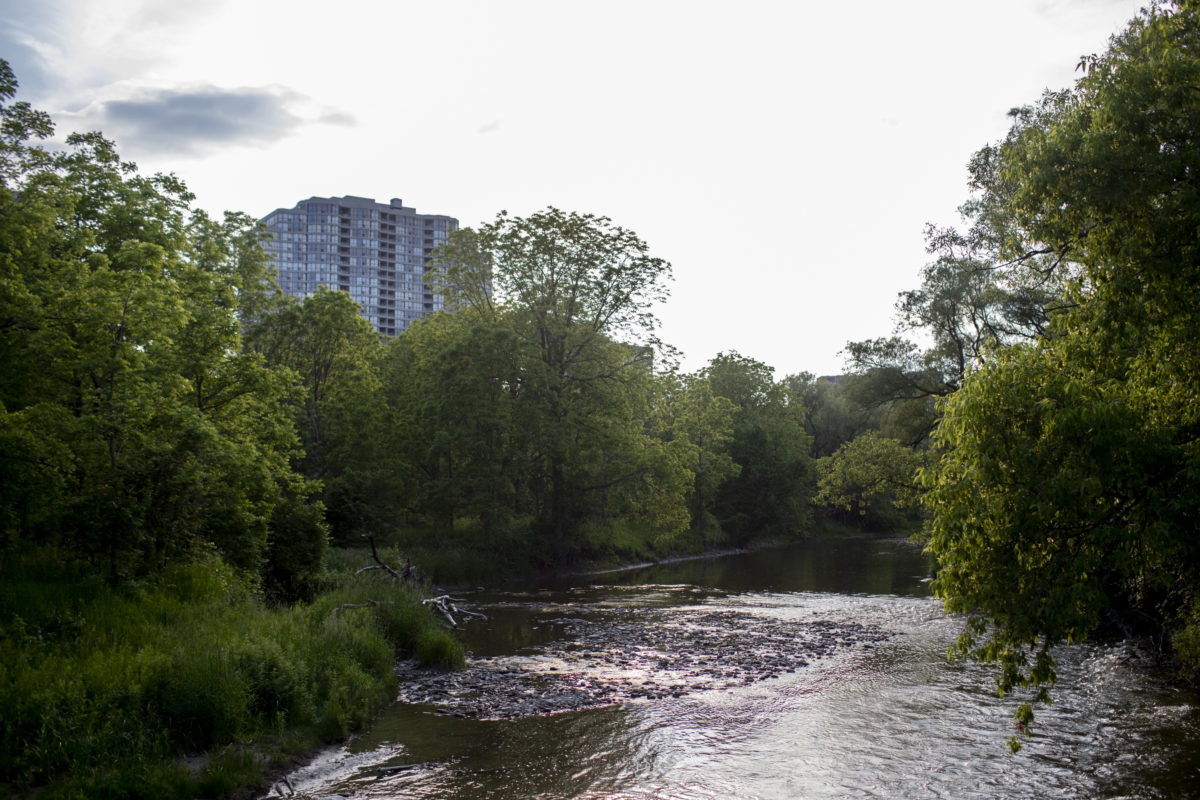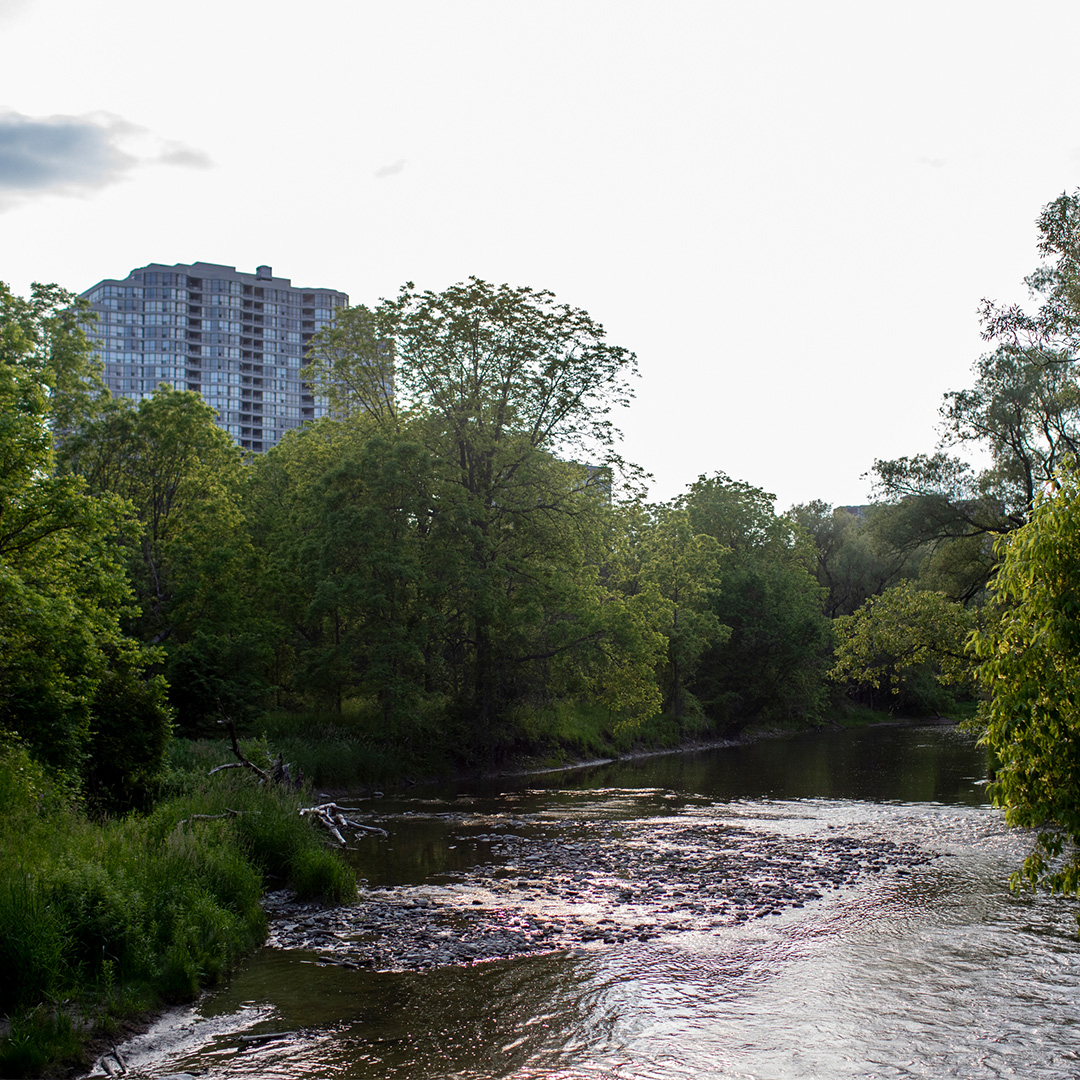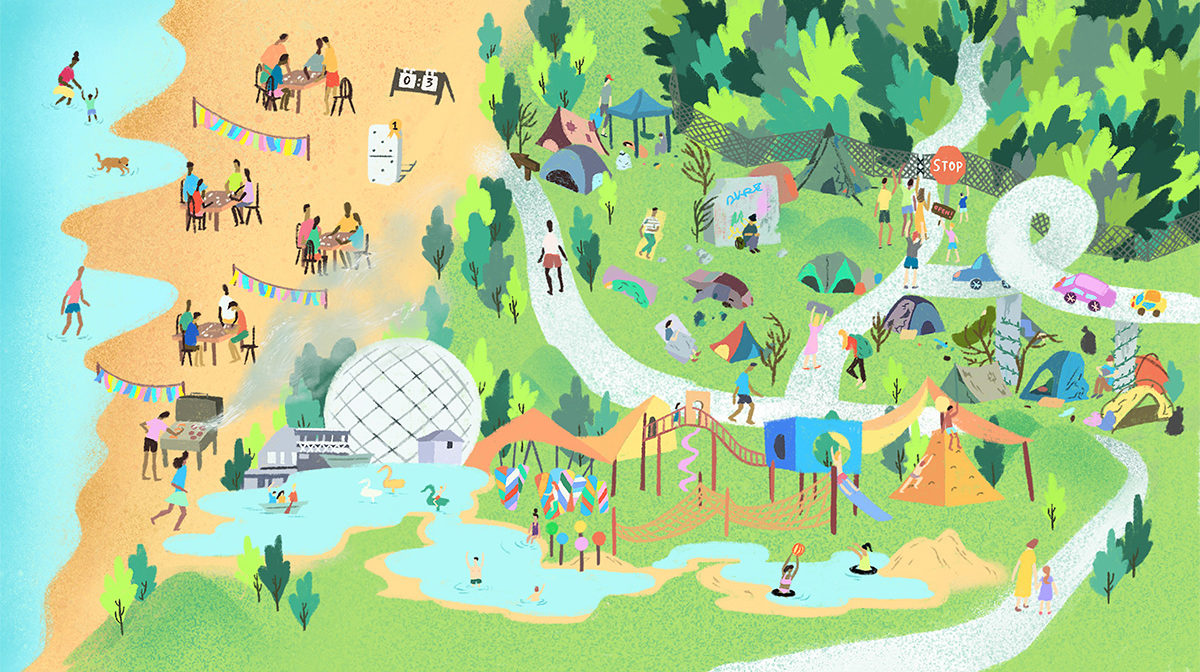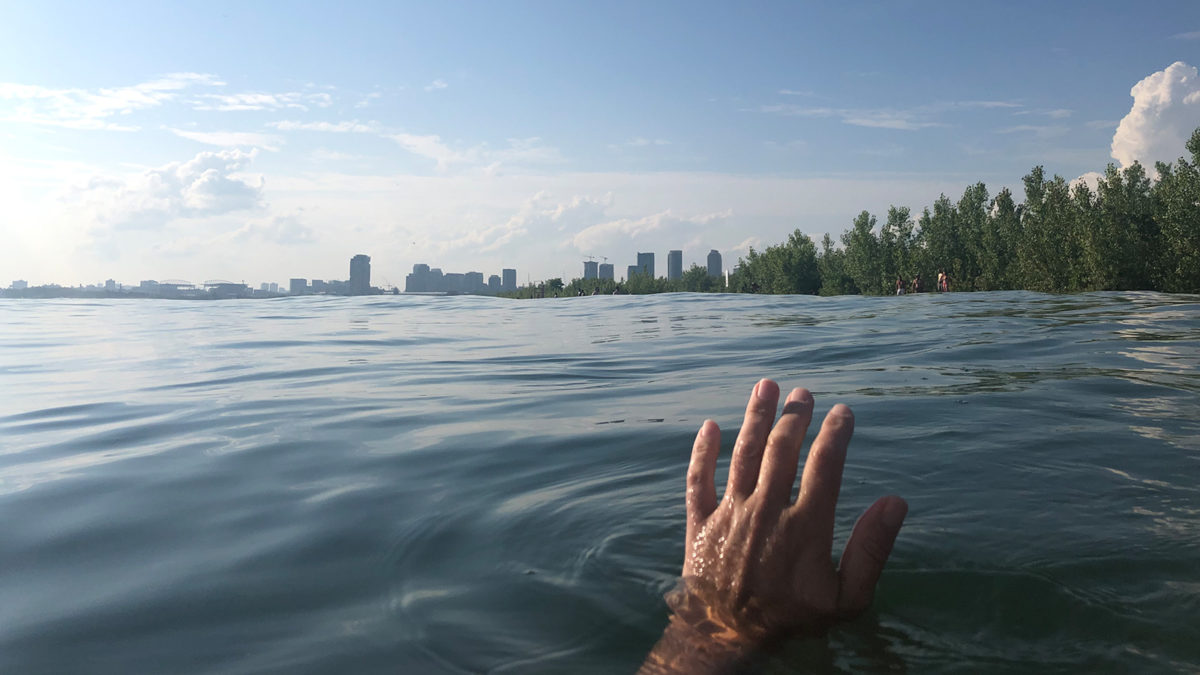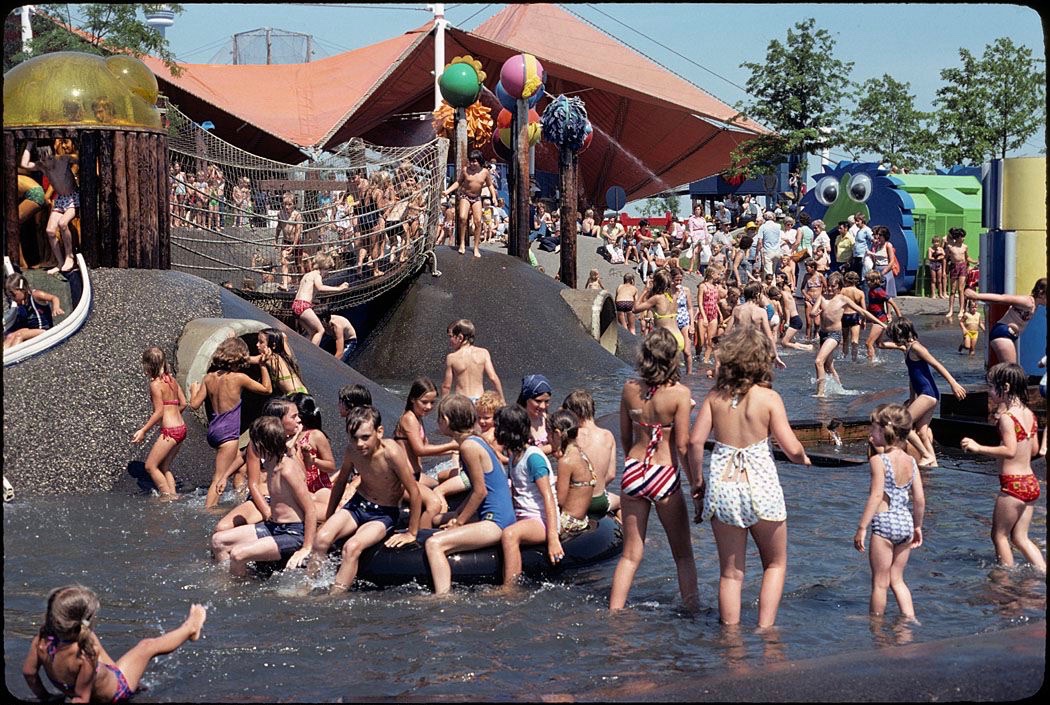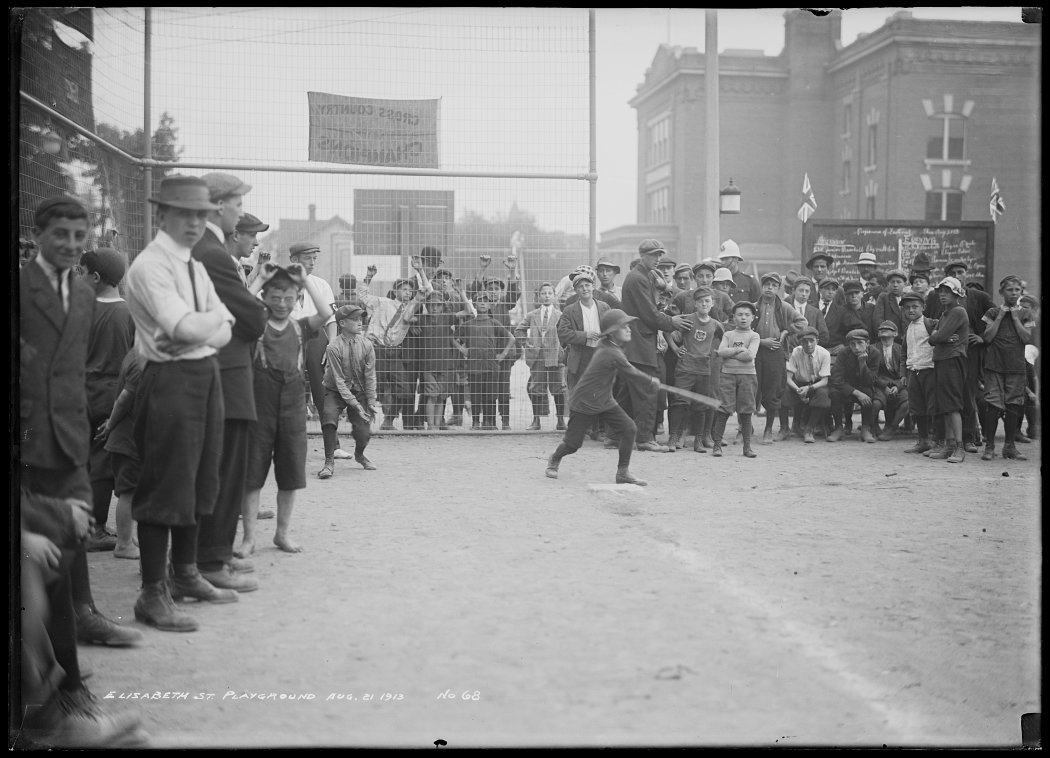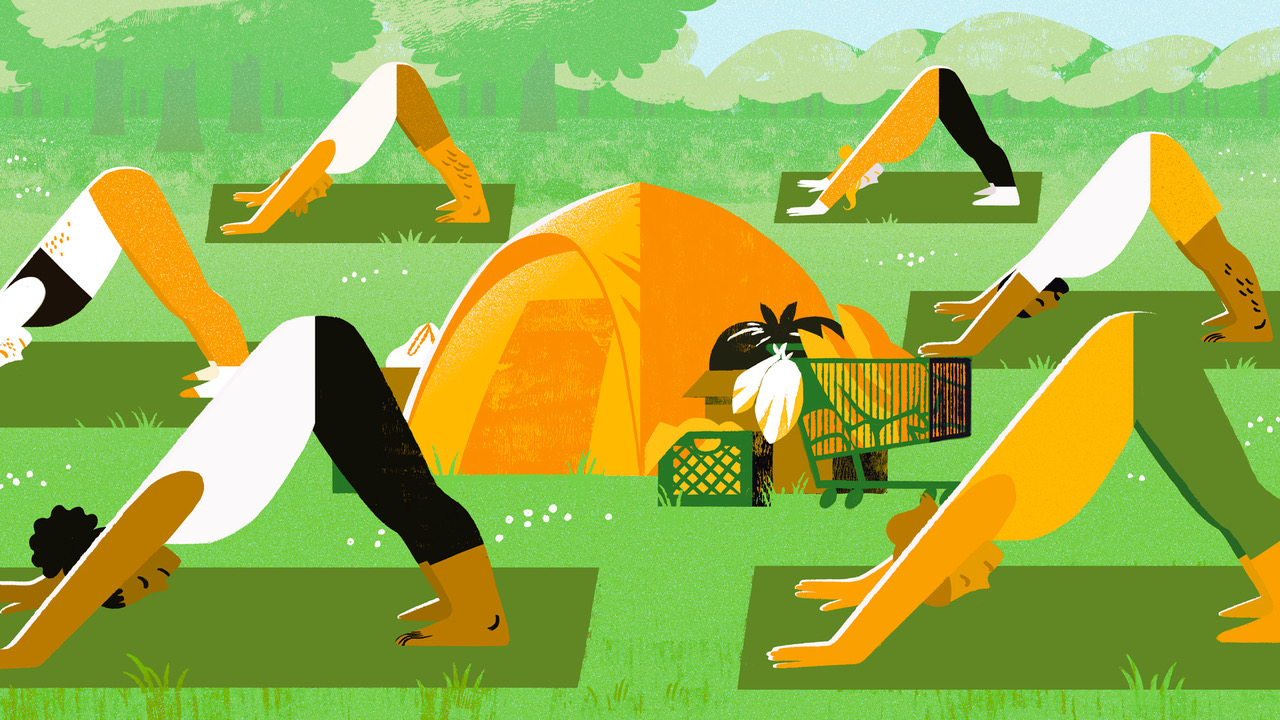As a child in the 80s, Ellie Hudon was rarely indoors. She had eight siblings and an extended family of forty—a clan too big for anybody’s backyard. So they hung out instead in Rowntree Mills Park, a serpentine 92-hectare greenspace that wends its way through Humber Summit, her North Toronto neighbourhood. Her fondest memories were of the relay competitions—epic triathlons, quadrathlons, and pentathlons, which included sack races and egg-and-spoon races—that she and her friends held in the park. “In the summer, I was there every day,” Hudon says. “My dad would load the picnic wagon with sandwiches, fruit, and lots of water. We’d arrive at 11 a.m. and leave at 6.”
When Hudon was a teenager, her parents left the neighbourhood for Mississauga. She moved back in 2008 at age 26, by which time she was a qualified paralegal running her own process-serving company. In the intervening years, Rowntree Mills had become controversial. Residents had complained to their city councillor, Giorgio Mammoliti, about loud music, parties, sex work, and drug deals in the park. In 2009, he responded by closing the space to cars.
The park was still accessible to cyclists and pedestrians, but many residents stopped using it. The road Mammoliti closed leads to three interior parking lots. The centre lot is at the flattest, grassiest region—the one best suited for get-togethers and pickup sports. To host a family picnic after the 2009 closure, you’d first have to drive to one of a limited number of curbside parking spots in the vicinity of Rowntree Mills. From there, you’d have to lug your supplies on foot for as much as a kilometre downhill over rugged terrain—a trip that could be perilous for seniors and exhausting for kids. Some families still made the effort, but many, understandably, did not.
According to Dave Harvey, the founder and executive director of Park People, a national non-profit organization that promotes access to greenspace, getting people into their local parks isn’t just a matter of having the right infrastructure; it’s cultural, too. People go where they feel welcome and steer clear of spaces where they sense they don’t belong. To determine which is which, they take their cues from one another. “Residents often aren’t sure if they’re allowed into a space or what they can do in it,” says Harvey, “until they see other people there.” His analysis helps explain why Mammoliti’s road closure had a chilling effect on park life. As Rowntree Mills got emptier, it began to feel less like a community hub and more like a no-man’s land—barren, foreboding, and strange.
At first, the closure wasn’t much of a problem for Hudon. In the early years of her career, her work kept her busy, and she didn’t have much time to spend outdoors. In the years that followed, Hudon had two daughters, Izabelle and Ruby, and a son, Iziah. She quit the process-serving business and now works as a radio host, motivational speaker, blogger, and activist. She visits Rowntree Mills nearly every day, weather permitting, with her family in tow. Vast stretches of the park are now overgrown and wild, and on weekdays, the space can be unnervingly quiet. Still, the regular exposure to fresh air and exercise keeps her kids from getting restless and enables them to sleep soundly at night.
What she hasn’t given them, though, is what she had growing up—the experience of belonging to a vibrant park community. So Hudon is now campaigning to reopen Rowntree Mills to cars and to make it as pivotal to neighbourhood life as it was in the 80s. This position puts her at odds not only with municipal bureaucrats but also with other Humber Summit residents, some of whom would prefer that the park—the fourth largest in the city—remain mostly inaccessible to cars.
The Rowntree Mills story is one of changing demographics and messy local politics. At its centre are questions that crop up every time there’s a neighbourhood dispute over common space: What do you do when community members disagree as to how a space should be used? And who gets to call themselves a community member anyway?
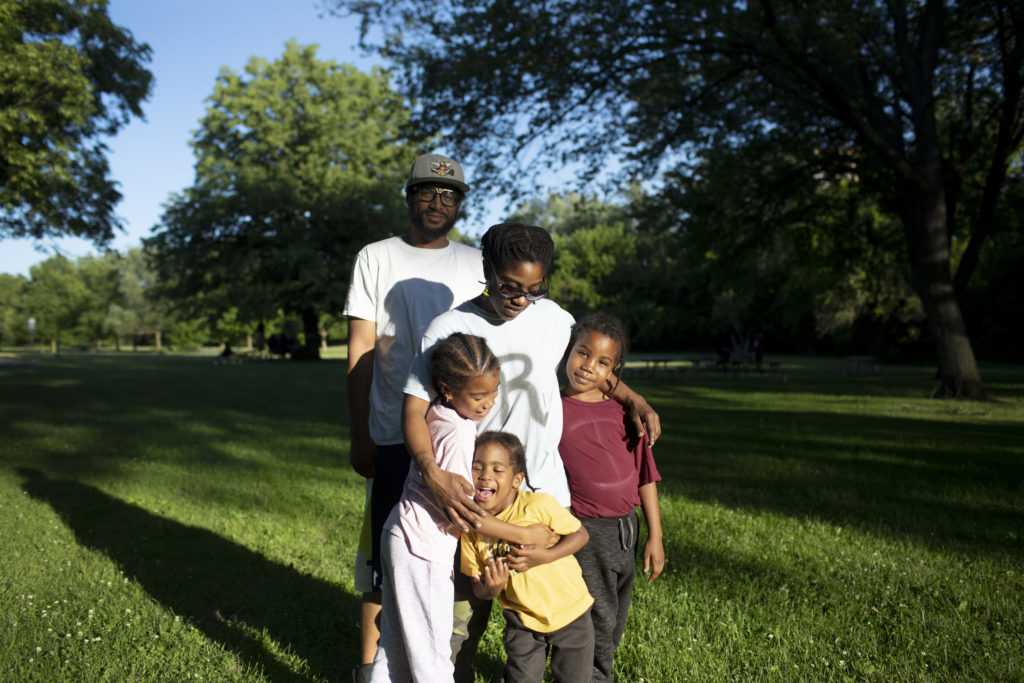
Rowntree Mills is part of the Toronto ravine system, the network of rivers and tributaries that cuts through the city and constitutes its most distinctive geographic feature. In the 19th century, the region was a patchwork of pioneer settlements and roughneck logging camps, with both a gristmill and sawmill owned by local entrepreneur Joseph Rowntree. By the interwar years, industry had all but disappeared from the area, and leisure culture had moved in to replace it. There were cottages for well-to-do Torontonians and a sprawling campground, with a bandshell, dancehall, and athletics facility, belonging to the Finnish Society of Toronto.
In 1954, Hurricane Hazel hit the area hard. Those cottages that weren’t destroyed were covered in mud and grime, and the local school became a refuge for displaced families. After the storm, the city prohibited real-estate developments on the floodplains adjacent to the ravines. Instead, these areas became public parks.
Like much of the Toronto ravine system, Rowntree Mills has a kind of ruggedness one doesn’t normally encounter in urban locales. It is a craggy, rocky valley with meadows, marshlands, and deciduous forests. Since the road closure, the deer population has exploded and, on a weekday stroll through the park in May, I saw more birds-of-prey than people. Luckier visitors have also seen muskrats, coyotes, or one of the many amphibians—green frogs, wood frogs, and American toads—that breed more abundantly there than anywhere else in the city.
These natural phenomena flourish against a backdrop of intense human activity. The adjacent municipal ward of Humber River–Black Creek is nominally suburban, but it has a population density of 3,500 residents per square kilometre, not too far below the citywide average. A historically Italian neighbourhood, the ward has more recently been settled by South Asian, Caribbean, and Middle Eastern immigrants; more than a quarter are refugees. The homes that sprung up in the postwar era—split-levels with decorative archways and built-in garages—now sit alongside looming high rises. Roughly 40 percent of the ward residents live in apartment buildings, and access to greenspace is desperately needed.
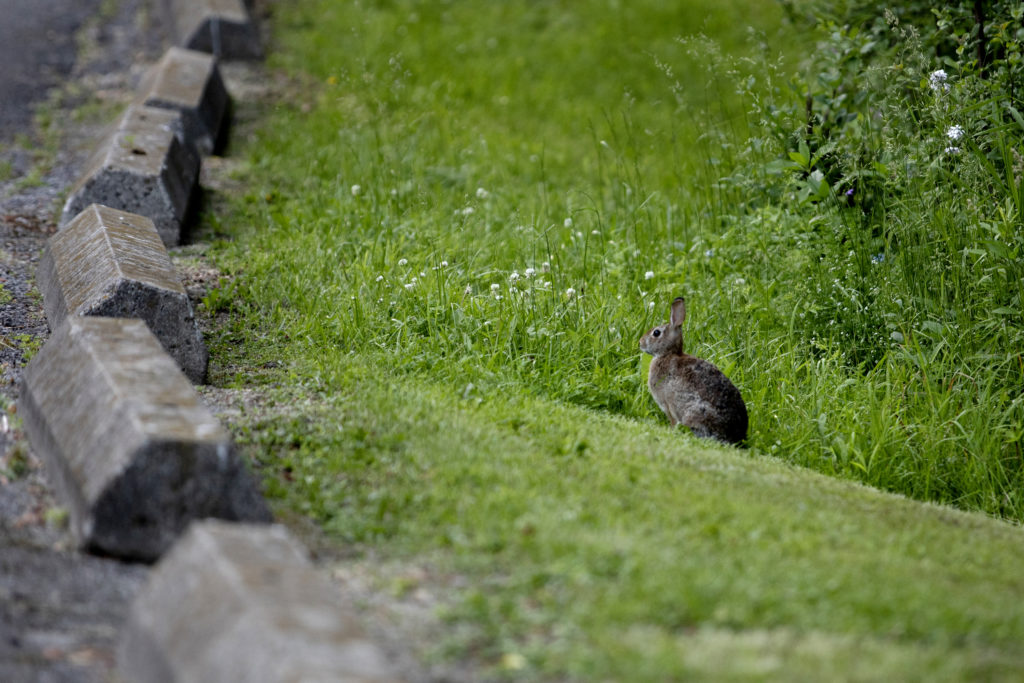
Grant Evers is a retired high-school teacher and current president of the Humber Summit Residents’ Association. When he started working at Father Henry Carr Secondary School in 1982, the student body was almost entirely Roman Catholic. Today, the school has many Evangelical Protestants from the Caribbean and Syriac Christians from Iraq. Evers would like to see Rowntree Mills regain its former liveliness but with a community as diverse as the classrooms in which he so recently taught.
In 2013, Evers and his wife, Barbara, read a Toronto Star article by the journalist Shawn Micallef about a group of young activists who were lobbying to have the park reopened. In response, Barbara sent an email to Mammoliti, calling on him to host a neighbourhood consultation. Shortly thereafter, the councillor announced a meeting at the nearby Gord and Irene Risk Community Centre.
The event didn’t strike Evers as an earnest attempt at democratic engagement; it seemed, rather, like political theatre intended to reinforce the status quo. The room had space for about 30 people. Security personnel at the entrance checked each residents’ ID and admitted only those who lived in the immediate vicinity of Rowntree Mills. Evers, whose house is steps from the park, was allowed in, but he was dismayed to see other Humber Summit residents being turned away. He recalls a Mammoliti aide telling him that the room simply didn’t have the capacity to seat every attendee. “I told him, ‘The room isn’t big enough because you made sure it would be small.’”
In loose terms, the park controversy can be understood as a disagreement between residents of the ward at large (many of whom live far from Rowntree Mills and can’t make full use of it without vehicle access) versus people whose properties are close to the park and who therefore benefit from having the parking lots remain closed. By excluding the former group from the 2013 consultation, Mammoliti effectively engineered a pro-closure consensus. During the meeting, Evers recalls, residents spoke darkly about the need to keep “undesirables” out of the park. One attendee expressed fear that, were the park reopened, people might come there to play basketball. The statement seemed racially tinged; it was also odd, given that there are no courts or nets in Rowntree Mills.
In 2014, City Council’s only concession was to re-open the parking lot closest to the south end of Rowntree Mills during daylight hours. The lot is roughly a kilometre from the flat, grassy centre of the park, so the change did little to improve access. Hudon believes that, to get more people using the space, further reforms are necessary. First, the road needs to be reopened, at least as far as the central lot. Second, the park could benefit from new amenities—a playground, soccer nets, and maybe a community garden—which will send a message that the space exists to be used. Finally, residents need to re-engage with Rowntree Mills—to spend time in it and gain a sense of familiarity and ownership. “When you haven’t been to a place for a long time, you forget how beautiful it is,” she says.
Urban parks are a mainly 19th-century phenomenon, the result of an emerging scientific consensus about the health benefits of fresh air and sunlight. Such spaces were controversial from the very beginning. According to historian Nan H. Dreher, the proliferation of green spaces in Victorian London—from about a dozen in 1850, to more than 200 by the turn of the century—threw the city into a state of roiling moral panic, particularly over sexual mores and cleanliness. Relevant newspaper editorials from the era convey a variety of sentiments, ranging from reasonable to spurious to downright bigoted. A discussion about sexual assaults in public parks, for instance, might then stray into complaints about changing courtship rituals and the proliferation of unchaperoned women. Regulations seeking to stop the spread of typhoid or small pox could morph into campaigns to bar homeless people, who were deemed unsanitary, from entering the commons.
Twenty-first-century Toronto has seen its share of park controversies and, as in Victorian London, the underlying social dynamics are messy. In 2007, people living in the Corktown neighbourhood complained to their residents’ and business association about unseemly behaviour in the nearby Sackville Park: drug users were allegedly bathing naked in the fountain and depositing used needles in the grass. These grievances, in turn, led to calls for a local methadone clinic to be driven out of the community. In 2016, complaints about public sex and indecent exposure in Toronto’s Marie Curtis Park led to a police crackdown, with charges laid against 78 people. Activists have characterized the campaign as a sting operation, one that disproportionately targeted gay men.
Park controversies often involve a mixture of legitimate and illegitimate grievances, and it isn’t always easy to distinguish between the two. In my own conversations with Humber Summit residents, many recalled rowdy, heavily attended park parties that took place during the Caribana weekend. Some residents claimed that it was a Caribana party in 2008 that prompted Mammoliti to close the road in the first place.
In Toronto, gripes over Caribana can sometimes feel like coded—or even blatant—expressions of racial animus. (In 1994, a heavily attended community meeting over a planned Caribana event in the Fairbank-Cedarville neighbourhood devolved into shouts and jeers. “We built Canada,” a white woman reportedly yelled.) For this reason, it can be hard to tell whether legitimate, if uncharitable, grievances about, say, noise or litter are actually motivated by deeper resentments. The same can be said about complaints over public safety. What does it mean when residents of a neighbourhood with changing demographics report that they no longer feel secure in their park?
Further complicating matters is the fact that Humber Summit and the adjacent Black Creek neighbourhood really do have problems with crime. In the 80s, Rowntree Mills was the site of late-night drag races. Drivers would dowse their wheels in gasoline, causing them to spin rapidly (and noisily) at the start of each race. (Sometimes, they’d pour the remaining fuel on picnic tables and set them on fire.) In the 90s and early 2000s, neighbourhood stories proliferated about muggings in the park, as well as drug dealers and sex workers operating there in the evenings. The most extreme crimes made it to the public record: newspaper reports mention shootings in Rowntree Mills as well as bodies washing up in the Humber River.
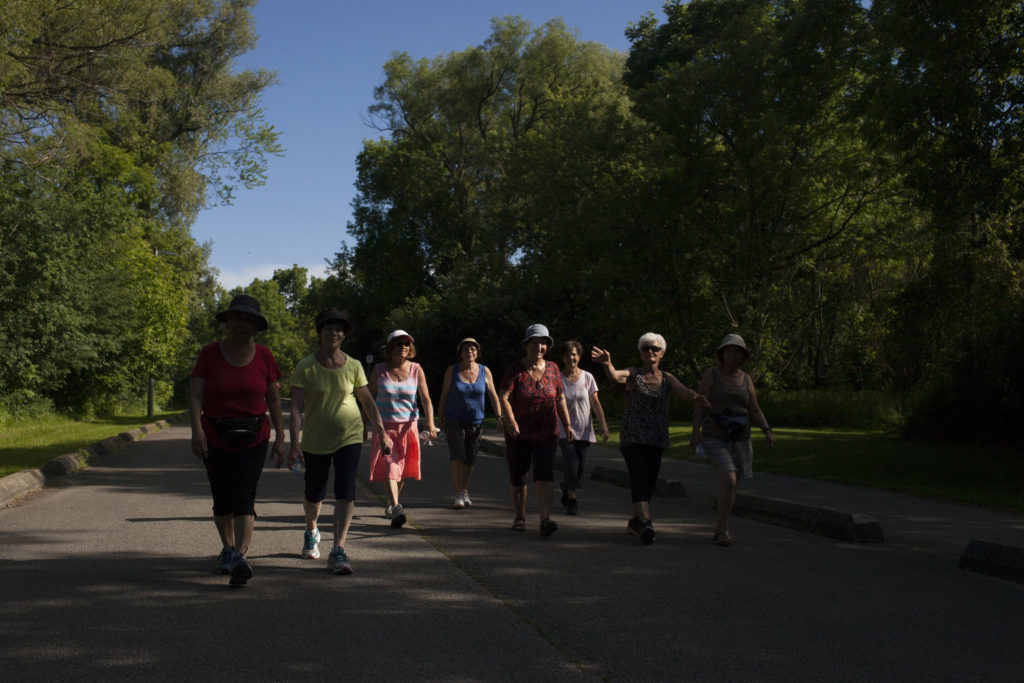
Lucy Russo is a Humber Summit resident with a strong connection to the park. Every morning and evening for the last twenty years, she and a group of women—all Italians and Italian Canadians—get together and hike the length of Rowntree Mills. They do it for exercise, companionship, and a chance to forage for dandelion leaves and mushrooms, which they remove from the trees with carpet knives.
Rousseau worries that if City Hall repeals the car ban, Rowntree Mills will become as congested as it was in the past. “We love it as it is,” she says. “We can be [on the road] without worrying about cars. We don’t want to walk on the grass, because we’re old and our feet go sideways.” She mentions that the car ban has markedly reduced visible rates of crime. She now sees fewer drug deals in the park, and she can venture into the bushes in search of mushrooms without worrying about spotting people having sex. “If everybody has access to the park,” she asks, “who controls what goes on?”
The spot where Russo and her friends convene for their hikes is only steps away from the home of Robert Fulford, who’s been in the community since 1966. When Hurricane Hazel hit, he was living with his family in Rexdale, just south of Humber Summit. He remembers how the storm washed out the roads and demolished the bailey bridges that spanned the creek. He also recalls how his uncle spent days afterwards carrying waterlogged bodies out of the ravine. In the decades following the hurricane, he says, Rowntree Mills was a bucolic wilderness. He and his family often explored it on horses, which they’d rent from a nearby stable.
“I don’t think it’s a good idea to reopen the park,” Fulford says of Rowntree Mills today. “It’s better closed. People can still use it. They can walk in or ride their bikes.” He argues that if the access road is reopened, the problems of the 90s and early 2000s will soon return, since police resources in the community are spread thin. He also worries that changing laws, such as the federal legalization of marijuana and more permissive regulations about drinking in parks, will contribute to a culture of rowdiness. “The people who want the park reopened today don’t really live in this neighbourhood,” he says.
It may be tempting to write-off these comments as NIMBYism, but Fulford’s concerns are rooted in his lived experiences as a long-time Humber Summit resident. Last year, when driving home from visiting his son, he was caught in the crossfire of a shooting. “The bullet hit the door of my car and rattled around,” he says. “At first, I thought somebody was throwing rocks at me.” It happened at 8 p.m., and the cops didn’t arrive until 10.” He showed me the bullet hole, an oval-shaped cut on the passenger side of his Pontiac Montana. “I was lucky nobody was in there with me,” he added. “If somebody had been sitting out front, they could have been hit.”
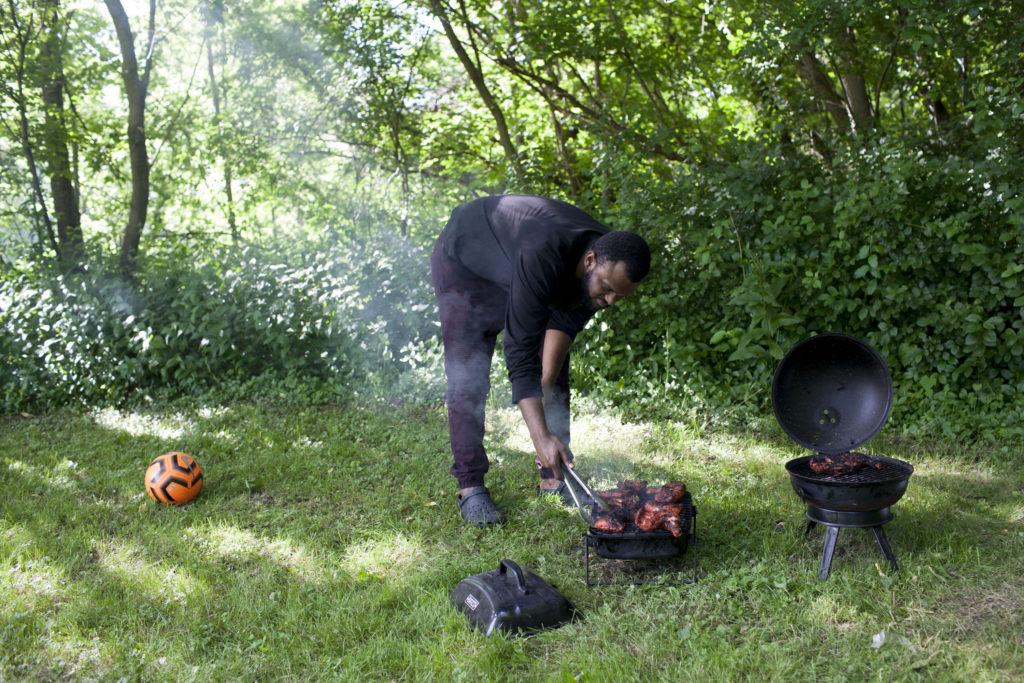
Closing Rowntree Mills may have been a ham-fisted way of addressing neighbourhood concerns, but simply reopening it and hoping for the best would be equally misguided. This April, Hudon organized an event in the park that she calls a “netwalk,” a play on “network.” “We need to get to know our community, so we’re networking,” she says, “but we’re also going for a walk.” She expected 20 people to attend, but ended up getting 60. The crowd included black, white, South Asian, and Italian residents.
The group convened at the southern entrance to Rowntree Mills, where they warmed up with a stretching exercise before heading to the central greenspace. As they walked, Evers talked about the history of the park, and another resident, Edith George, spoke of the destruction wrought by Hurricane Hazel. The final stop was E Caribbean Delight, a nearby eatery where the chef served his signature dish: shrimp and jerk-chicken poutine. At the restaurant, Hudon held a raffle, for which the top prize was an oil painting of Rowntree Mills. Attendees also signed a petition calling on their new city councillor, Anthony Perruzza, to reopen the central parking lot. The event felt, to Hudon, like a kind of reunion. She loved seeing people connect with a neglected part of their community.
In May of this year, Hudon and Evers received word from Perruzza that the central parking lot in Rowntree Mills would be re-opened to cars. (The change will go into effect either later this summer or early next spring.) Perruzza says that, when he was campaigning in the municipal election last October, many ward residents asked him to reverse the ban. These comments, along with reinvigorated community activism, convinced him to take action.
The next challenge is putting Rowntree Mills back on the map without reigniting the problems of the past. Hudon is seeking a permit for both a second netwalk and a picnic to commemorate the 20th anniversary of the day the Humber River received heritage designation. She hopes to show residents that the park isn’t just a geographic anomaly in their midst but something more like a shared backyard.
To get such a message out, the signage at Rowntree Mills could use an upgrade. “Ravines can be strange spaces,” says Dave Harvey, the Park People founder. “You’re in a dense city, and then, all of a sudden, you’re down in a valley, and you can quickly get lost. Some ravines have large greenspaces, but you don’t necessarily see them from the outside. So you’re not sure, is that a park? Or is that someone’s private property?” The road closure was bad PR, because it conveyed an exclusionary message. Countering that message will require an investment in better communications.
It will also require further expenditures on park protection. To allay neighbourhood complaints about litter, City Hall could expand the budget for cleanups, particularly after long weekends and major cultural events. Because police resources in the community are strained, the city must also invest in increased oversight, albeit of a different kind to what normally goes on in the ward.
“Ideally, you want police who aren’t just in the park but in the community as well,” says Minaz Asani-Kanji, a Park People outreach manager who has helped organize events in Rowntree Mills. “That way, when people see the police, they say, ‘Yes, we know these people, and we want them here.’” For instance, cops might lead bicycle-safety demonstrations, coach sporting events, or pitch in behind the grill at park BBQs. Such activities build trust and establish a presence that isn’t intrusive. When it comes to regulating behaviour, the cops should use a light touch: where possible, warnings and citations are preferable to tickets and arrests. Of course, nearby residents will have to tolerate some rowdiness during summer weekends—such is the nature of city living—but they may be more forgiving of noise if Rowntree Mills is properly patrolled and maintained.
Parks have always been contested spaces, but Harvey argues that this fact isn’t necessarily a bad thing. “There can be conflicting uses,” he says. “For instance, someone wants to play soccer, and someone else wants to play baseball. Part of the beauty of public spaces is that you have to sort these things out. You have to talk to people and compromise.” The goal, then, should be to regulate Rowntree Mills lightly and appropriately—and then turn it over to residents so they can make it their own.
In addition to the summer obstacle courses in the park, Hudon has fond memories of the skating rink her peers created each winter. They’d carry buckets of water from the nearby houses and deposit them in a gully. She took me to the site where the rink once sat, and I mentioned that it was surprisingly small, barely larger than a walk-in closet. The size, she explains, wasn’t the point. They loved the rink because they’d built it themselves, and so they felt like they owned it.

